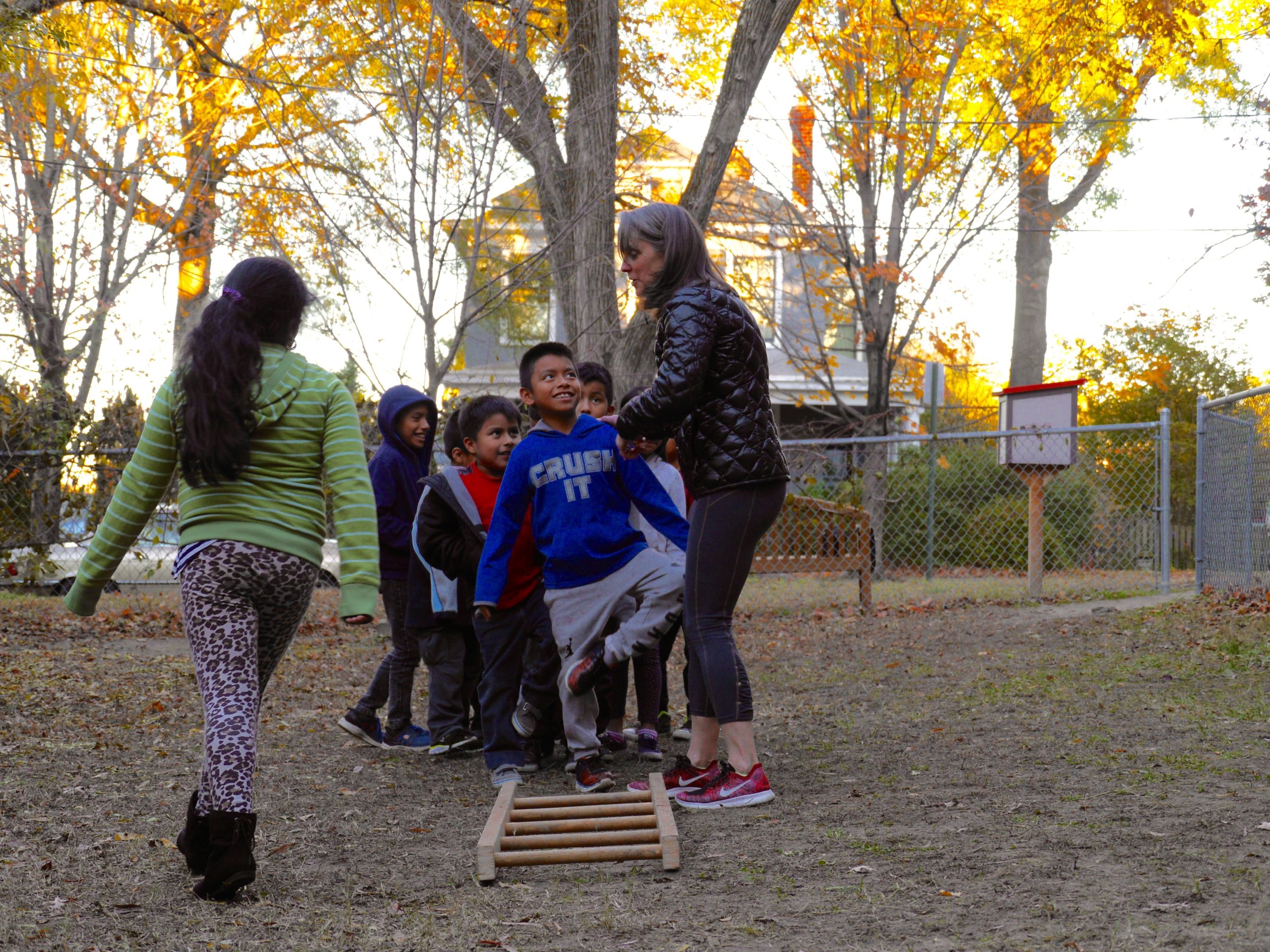Through my 16 years of teaching movement to children lots has changed. Our culture has become increasingly more sedentary, more focused on technology and less focused on the necessary physicality of the preschool years. When children don’t experience big body physical play, the brain doesn’t make the necessary connections that help build strong learners. The right and left brain have a harder time talking to each other across the corpus callosum and complex thought and problem solving become challenging.
Over the years, I have seen a diminishment of core strength which puts preschoolers in a tough spot when it comes to learning and physical development. Josef Pilates called the core the “power house” because all our movement is initiated at the core. The stronger our core, the more smooth moving and controlled our appendages, so writing becomes easier, holding a book to read is easier even sitting in a chair is easier. A strong core gives children power to move aerobically and sustain that movement, ultimately fueling the building of brain cells. When children can move with strength they also gain confidence in their abilities, not just in play, but the classroom as well.
I have also seen a drop in grip strength which is developed in climbing, swinging and pulling heavy things. Without grip strength, children struggle with pencil mechanics. I have seen children who aren’t aware of their bodies and the space they take up in the world or how hard to push something (like a pencil to paper) or someone (like a friend) often pushing too hard because they haven’t experienced the heavy part of play like jumping, dragging, pushing or climbing. Their bodies don’t have the ability to sense what “hard” is, so they overcompensate.
Additionally, I have seen more W-sitters in the pre-K years. W-sitting is when children sit with their knees in front of them and their legs go out to the side so their feet are beside their hips, making a “W” shape on the floor. This is a very stable way to sit and sometimes when children are just figuring out the process of independent sitting they will sit this way to maintain balance. But as they age they should move away from this posture. First, this can eventually lead to hip and knee alignment issues and damage to those joints. Second, and almost more importantly, it can keep the brain from developing properly. Why? At the most basic level this stable posture does not activate any core musculature, so the preparation the body needs for sitting in a chair in elementary school is not taking place. But it also doesn’t allow for rotation of the upper body, so a child playing with a toy on the right side can only use their right hand to play with it and must transfer the toy to their left hand to play with it on the left side. This means the hands are not crossing the midline of the body. Two things happen when we fail to cross the midline with our hands: first, the right and left brain do not talk to each other, so we begin to inhibit that conversation across the corpus callosum and make the long term goal of complex thinking more difficult. Second, we hinder the ability to develop a dominant hand and a helper hand. All of us need a hand that does the majority of the work and a hand that helps it. Very few of us are truly ambidextrous and more often than not, when a child demonstrates what might appear to be the ability to use both hands, they are actually inefficient with both hands. This could lead to struggles in elementary school when writing, cutting and manipulating become keys to success.
When I approach the movement room in each school, I feel a great responsibility to help guide these amazing kids into the successful students they will be in elementary school. Movement powers their learning, it fuels them for success and I take that very seriously. We spend time getting aerobic to fuel the brain, we build core strength and cross the mid-line actively. We work on grip strength, upper and lower body strength. We work on ways to recognize where we are in space and how much space we take up. We stimulate the senses that allow us to recognize force and activate neural wiring. But I only have the blessing of a few minutes a week with them. Children need at least 60 minutes a day of free, big, full body, hard play. And 60 minutes is the bare minimum. It should be more. Taking kids to explore playgrounds near and far is a great way to stimulate their brains and bodies. Sending them outside to play in the backyard, without adult direction, is a great way to extend their social and emotional skills while boosting their learning skills. Their “school” day isn’t quite finished when carpool ends. Adding in as much movement and big play as possible every day will maximize a preschoolers confidence, skill set and neurological preparation for things to come! Kids need to Move to Learn!
Photo by Liza Blackburn
